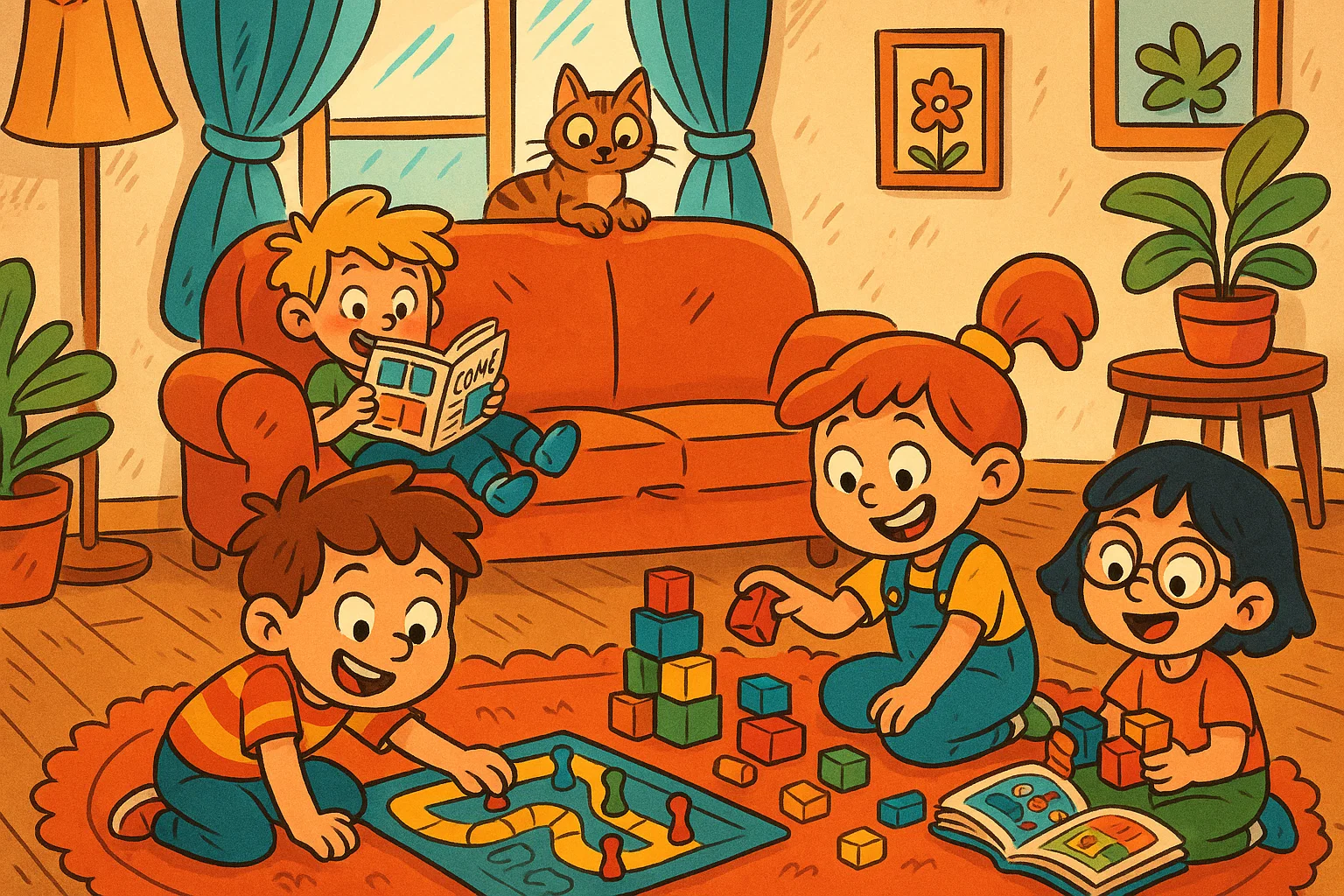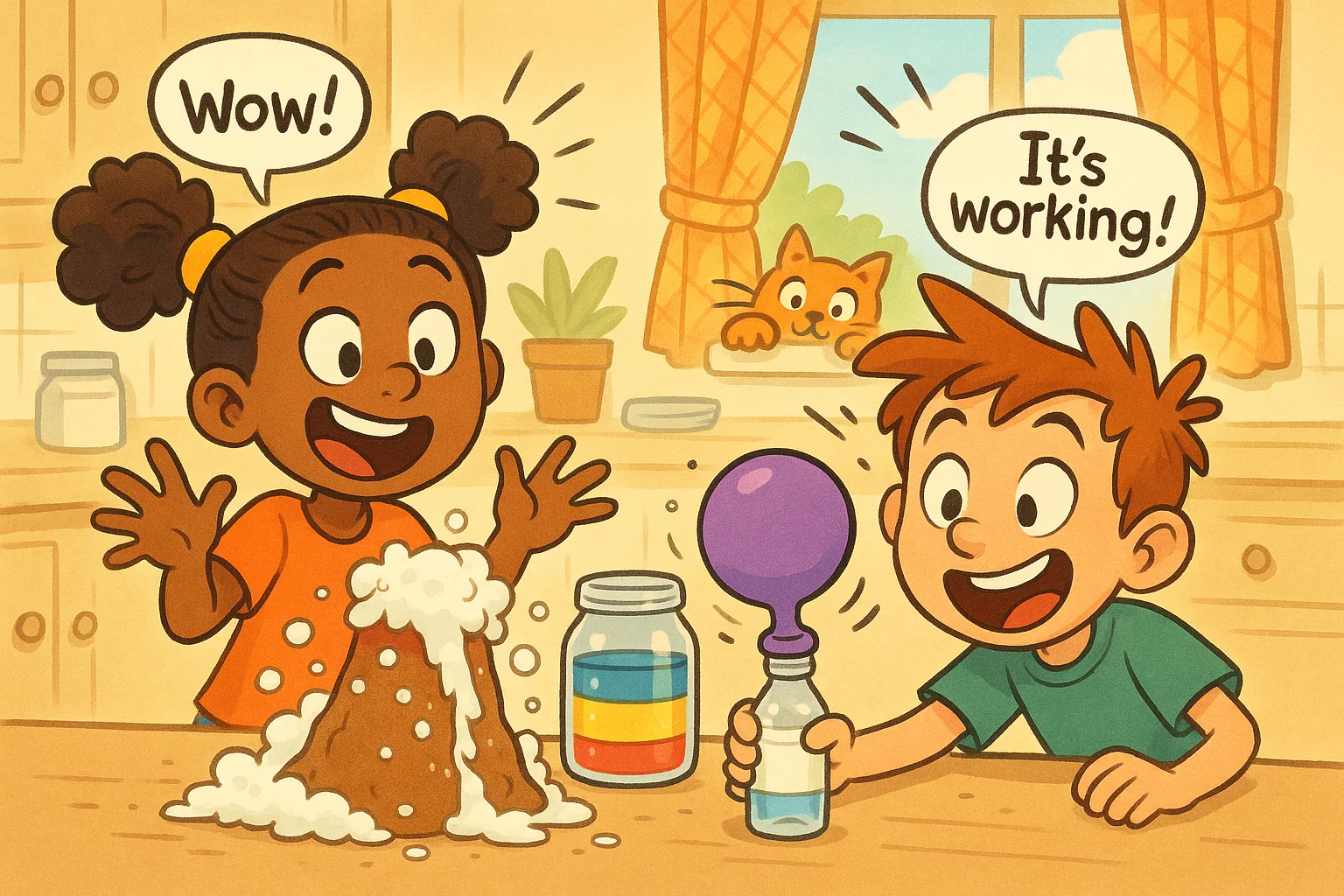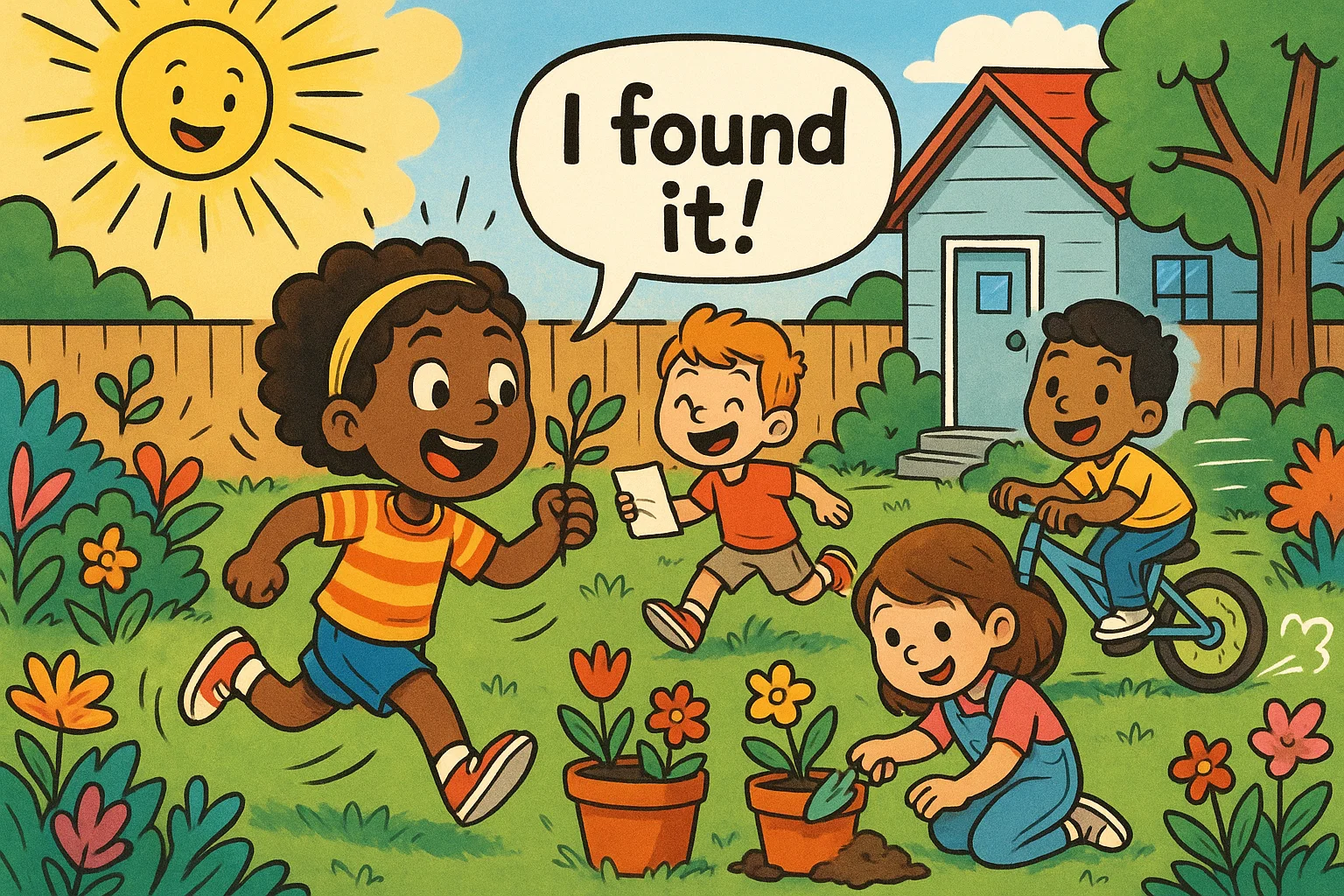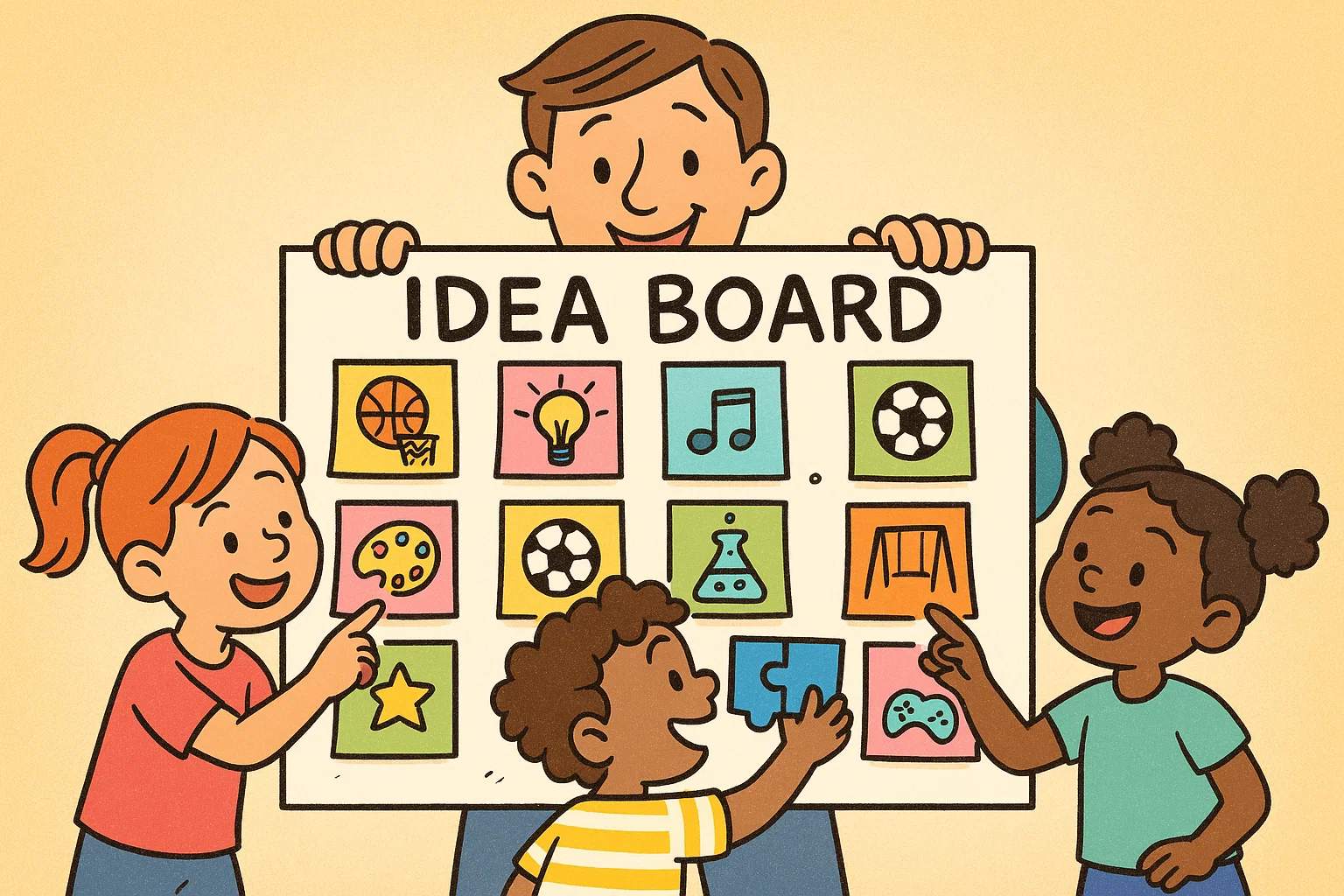45+ Indoor Activities for kids 8-Year-Olds: Fun Learning at Home

Eight-year-olds are at a fascinating stage of growth—curious, energetic, and ready to take on more complex challenges. Research shows children this age can stay focused for 16–24 minutes, making it the perfect time to explore activities that boost both learning and fun.
Whether it’s a rainy day, school holidays, or just time for family bonding, having a set of engaging activities for kids makes life easier for every parent. This guide brings you over 30 creative, fun, and educational ideas for children aged 5–8 that turn your home into a place of discovery while supporting cognitive, physical, and emotional development.
Creative Indoor Games and Activities for 8-Year-Olds
Creative expression plays a crucial role in developing problem-solving skills and emotional intelligence. Research from the National Art Education Association suggests that children who engage in regular creative activities show improved academic performance and enhanced critical thinking abilities.
DIY Arts and Crafts Projects
Transform everyday materials into extraordinary creations with these engaging craft ideas. Try these fun projects that work well for both toddler supervision and independent work for older children.
Paper Plate Masterpieces: Create masks, clocks, or seasonal decorations using paper plates, crayon coloring, and craft supplies. Safety tip: Always supervise when children use scissors, and provide child-safe versions for independent work.
Alphabet Art Gallery: Design decorative letter displays using different materials for each letter – cotton balls for “C,” aluminum foil for “A,” or pipe cleaners for “P.” This activity combines creativity with spelling practice and can serve as free printable worksheet alternatives.
Cardboard City Building: Collect boxes of various sizes to construct buildings, vehicles, or fantasy worlds. Children love playing architect while developing spatial reasoning. This collaborative project can evolve into elaborate constructions that work as a team effort with siblings or friends.
Recycled Robot Workshop: Use toilet paper rolls, bottle caps, and aluminum foil to create unique robots. Add battery-operated LED lights (with supervision) for an extra technological twist that bridges craft and basic engineering concepts.
Make a Scrapbook or Memory Book
Help your child document their experiences by creating a personalized keepsabook. This literacy-focused activity combines storytelling with visual arts while preserving precious memories.
Provide photo printouts, drawing paper, glue sticks, and decorative materials like stickers or washi tape. Encourage your child to write short descriptions of events, creating a narrative thread throughout their book. This activity naturally develops writing skills while fostering reflection and gratitude.
Consider themed scrapbooks focusing on family adventures, seasonal changes, or personal achievements. The process of organizing and presenting information supports executive function development crucial for academic success.
Homemade Modeling Dough and Clay Creations
Create safe, non-toxic modeling dough using simple kitchen ingredients: 2 cups flour, 1 cup salt, 2 tablespoons cream of tartar, 2 tablespoons oil, and 1.5 cups boiling water with food coloring.
This sensory activity provides excellent fine motor practice while encouraging three-dimensional thinking. Challenge your child with sculpting projects like favorite animals, miniature food items, or abstract sculptures. The tactile experience supports sensory development and can be particularly beneficial for children who learn through hands-on exploration.
Create a Home Craft Museum
Transform completed projects into a special exhibition space. Dedicate a shelf, table, or wall area for displaying artwork with handwritten labels describing each piece. This validation of their creative efforts boosts self-esteem and teaches organizational skills.
Consider hosting “gallery openings” where family members can view and discuss the artworks, providing opportunities for your child to practice presentation skills and receive positive feedback for their creative efforts.
Fun Learning Activities at Home
The key to successful at-home learning lies in disguising education as entertainment. Play-based activities often improve engagement and recall compared with more formal tasks. Printable activities and hands-on experiments can create lasting impact without the pressure of formal worksheets.
These games help develop key math skills, literacy, and critical thinking provide a natural way to support their learning journey.
Science Experiments with Household Items
Transform your kitchen into a laboratory with these safe, exciting experiments that demonstrate scientific principles through hands-on discovery.
Volcano Eruption: Combine baking soda, white vinegar, food coloring, and dish soap in a plastic bottle for a dramatic chemical reaction that teaches about acids, bases, and gas formation.
Crystal Growing Garden: Create saturated salt or sugar solutions to grow crystals over several days. This long-term project teaches patience while demonstrating crystallization processes and solution concentration.
Balloon Rocket Challenge: Thread string through a straw, attach it to a balloon, and watch it zip across the room when released. This activity illustrates Newton’s third law of motion in an accessible, entertaining way.

Trivia Games and Fun Facts Challenge
Create custom trivia sessions tailored to your child’s interests and educational needs. This competitive family activity can cover topics from geography and history to pop culture and sports.
Weekly Theme Challenges: Focus each week on a different subject area, encouraging your child to research and contribute questions. This approach builds research skills while expanding general knowledge.
Fact-a-Day Calendar: Start each day with an interesting fact, then challenge your child to find related information or connections throughout the day. This practice develops curiosity and information-seeking behaviors essential for lifelong learning.
Math and Logic Puzzles
Make numeracy enjoyable with puzzles that challenge logical thinking without feeling like traditional schoolwork. These activities help develop key maths skills through engaging play.
Dice Adventures: Use standard dice for probability experiments and addition practice. Roll two dice and predict sums, or create simple board games where players advance based on mathematical calculations.
LEGO Math Challenges: Use LEGO bricks for hands-on fraction work, pattern recognition, and basic geometry. Build towers to specified measurements or create symmetrical designs that demonstrate mathematical concepts.
Tangram Adventures: Use this ancient Chinese puzzle to create shapes and figures while developing spatial reasoning and geometric understanding. Start with simple patterns and gradually increase complexity.
Kid-Friendly Sudoku: Introduce simplified 4×4 or 6×6 grids using pictures or colors instead of numbers for younger beginners, then progress to traditional number grids as confidence builds.
Math Riddle Treasure Hunts: Create clues that require mathematical problem-solving to find the next location, combining physical activity with numerical practice.
Reading Time and Storytelling
Literacy development extends far beyond reading comprehension to include creative expression and oral communication skills. These activities help your child to read with greater confidence while developing spelling and vocabulary.
Collaborative Story Creation: Take turns adding sentences to develop shared stories with a friend or family member, encouraging creativity while practicing narrative structure and character development.
Reader’s Theater: Act out favorite books using simple props and costumes, bringing literature to life while improving comprehension and performance confidence.
Author Study Projects: Choose a favorite children’s author and explore multiple works, comparing themes, characters, and writing styles to develop critical thinking about literature.
Alphabet Scavenger Hunt: Search around the house for objects beginning with each letter, creating a fun spelling reinforcement activity that can be adapted for different skill levels.
Screen-Free Play Ideas
In our digital age, providing engaging alternatives to screen time becomes increasingly important for balanced development. Parent Isabel Thomas shares that “playing games without screens allows children to develop crucial social and problem-solving skills that digital entertainment cannot replicate.” The American Academy of Pediatrics recommends limiting recreational screen time for school-age children to maintain healthy development patterns.
Indoor Obstacle Course
Design safe challenges using household furniture and materials to create an adventurous physical activity that can be easily modified for different skill levels.
Use painter’s tape to mark pathways, arrange cushions for jumping stations, and create crawling tunnels using chairs and blankets. Time each attempt to add competitive elements, or focus on completing challenges with specific requirements like carrying objects or moving in particular ways.
This activity develops gross motor coordination, spatial awareness, and problem-solving skills while providing excellent indoor physical exercise during inclement weather.
Board and Card Games for 8-Year-Olds
Strategic thinking develops rapidly at age eight, making this the perfect time to introduce more complex games and activities that challenge cognitive abilities.
Classic Strategy Games: Chess, checkers, and backgammon teach strategic planning and consequence prediction. Start with simplified rules and gradually add complexity as understanding develops.
Modern Board Games: Games like “Ticket to Ride: First Journey,” “Azul,” or “Kingdomino” offer age-appropriate strategy with shorter play times that maintain attention while building critical thinking skills.
Card Game Mastery: Beyond simple Go Fish, introduce “UNO,” “Skip-Bo,” or traditional card games like “Crazy Eights” that require hand management and tactical decision-making.
| Game Type | Skills Developed | Approximate Play Time |
| Strategy Board Games | Critical thinking, planning | 30-45 minutes |
| Card Games | Memory, probability | 15-30 minutes |
| Cooperative Games | Teamwork, communication | 20-40 minutes |
Puppet Shows and Role-Play
Create entertainment while developing storytelling abilities and emotional intelligence through character exploration and creative performance.
Sock Puppet Theater: Transform old socks into characters using buttons, yarn, and fabric markers. Construct a simple stage using a cardboard box, encouraging your child to develop shows with beginning, middle, and end story structures.
Stuffed Animals Adventure Club: Use existing stuffed animals to create elaborate storylines and adventures. Children can practice dialogue, character development, and narrative skills while engaging with beloved toys.
Pirate Treasure Adventures: Create pirate-themed role-play scenarios with treasure maps, costume creation, and adventure storytelling that combines history learning with imaginative play.
Historical Role-Play: Choose historical figures or time periods for educational dramatic play that combines learning with creative expression.
Paper Airplane Competitions
This engineering challenge combines creativity with physics principles while providing entertaining group or solo activity options.
Teach various folding techniques, then experiment with modifications to achieve different flight patterns. Create target practice games or distance competitions, discussing how design changes affect performance.
Document results to introduce basic scientific method concepts: hypothesis formation, testing, and conclusion drawing.
Outdoor Activities at Home
Fresh air and physical activity remain crucial for healthy development, and even small outdoor spaces can provide rich learning and play opportunities. Getting kids to get outside regularly supports both physical health and mental wellbeing while providing natural learning experiences.
Backyard Nature Hunt
Transform your outdoor space into a scientific expedition that develops observation skills and environmental awareness.
Create seasonal scavenger hunt lists focusing on natural objects: different leaf shapes, insect varieties, rock types, or weather patterns. Provide magnifying glasses and collection containers to encourage detailed investigation.
Documentation Practice: Encourage children to draw or photograph discoveries, creating nature journals that combine artistic expression with scientific observation skills.
Hide and Seek Nature Edition: Transform this classic game by adding educational elements – hide alphabet letters around the yard for children to find in order, or create themed hiding games focused on colors, shapes, or numbers.

DIY Sports Challenges
Adapt traditional sports for small spaces while maintaining the physical and social benefits of athletic participation.
Balloon Volleyball: Set up a net using string between two chairs for a gentle version that develops hand-eye coordination without property damage risks.
Miniature Golf Course: Use household items to create putting challenges throughout your yard or patio, incorporating obstacles and varied terrain.
Relay Race Variations: Design obstacle courses that can be completed in limited space, focusing on specific skills like balance, agility, or coordination.
Water Play and Simple Experiments
Combine refreshing fun with scientific exploration through water-based activities perfect for warm weather.
Floating and Sinking Investigations: Gather various household objects to test buoyancy predictions, introducing concepts of density and displacement.
Water Transfer Challenges: Use different containers and tools (spoons, sponges, funnels) for timed challenges that develop fine motor control and problem-solving abilities.
Activities that Build Life Skills
Practical skill development through meaningful household contributions builds confidence and responsibility while teaching valuable life competencies.
Cooking and Baking Together
Age-appropriate culinary activities teach measurement, following directions, and basic nutrition while creating delicious results.
Simple Recipe Mastery: Start with no-cook options like trail mix or sandwiches, then progress to simple baked goods like muffins or cookies that require adult supervision for oven use.
Measurement Math: Cooking naturally incorporates fractions, ratios, and conversions, making math concepts tangible and practical.
Kitchen Safety Education: Teach proper hand washing, knife handling (with supervision), and hot surface awareness as fundamental life skills.
Gardening Projects
Even container gardening teaches responsibility, patience, and basic biological concepts while providing ongoing project engagement.
Herb Garden Starter: Basil, mint, and parsley grow easily in pots and provide immediate satisfaction with quick germination and growth.
Seed Starting Experiments: Compare growing conditions by varying light, water, or soil types to introduce scientific method concepts through practical application.
Organizing Personal Space
Transform tidying into creative challenges that build organizational skills and personal responsibility.
Room Design Projects: Help your child rearrange their space for better functionality, teaching spatial reasoning and decision-making skills.
Collection Organization: Whether rocks, books, or toys, creating organizational systems develops categorization skills and logical thinking.
Special Theme Days at Home
Themed experiences create memorable learning opportunities while breaking routine monotony and building anticipation for special activities.
Costume and Role-Play Day
Choose themes that integrate multiple learning areas while encouraging creative expression and imaginative play.
Professional Explorer Day: Combine science experiments with adventurer costumes, creating laboratory or archaeological expedition experiences.
Historical Time Travel: Select time periods for costume creation, traditional food preparation, and era-appropriate activities that bring history to life.
Mini Olympics
Design competitive challenges that celebrate effort and improvement rather than just winning, building confidence and sportsmanship.
Create homemade medals using cardboard and ribbon, establishing different categories that recognize various strengths: creativity, persistence, teamwork, and improvement.
Culture and Travel Day
Virtual travel experiences expand worldview while introducing geography, culture, and global awareness concepts.
Choose countries to explore through food, music, traditional games, and basic language learning. This approach builds cultural sensitivity and global consciousness increasingly important in our connected world.

Tips for Keeping Kids Engaged at Home
Successful at-home activities require thoughtful planning and flexibility to maintain interest while meeting diverse developmental needs.
Setting a Daily Routine
Structure provides security while flexibility maintains engagement. Research from the Child Mind Institute indicates that predictable routines reduce anxiety while supporting executive function development.
Activity Balance: Alternate high-energy physical activities with quiet, focused tasks to prevent overstimulation and maintain sustainable engagement throughout the day.
Choice Integration: Provide options within structured timeframes, allowing children to exercise decision-making skills while maintaining helpful boundaries.
Encouraging Independence
Foster self-directed learning by gradually reducing adult involvement as children demonstrate competence and confidence.
Project Ownership: Allow children to make creative decisions and learn from mistakes, building resilience and problem-solving confidence.
Resource Access: Organize craft supplies and activity materials for independent access, teaching organizational skills and fostering autonomous engagement.

Balancing Screen Time
Integrate technology purposefully rather than eliminating it entirely, teaching healthy usage patterns and digital literacy skills.
Educational Apps: When using tablets or devices, choose applications that promote creativity, problem-solving, or skill development rather than passive entertainment.
Co-Viewing Opportunities: When screen time occurs, engage actively by discussing content and making connections to offline learning and experiences.
Frequently Asked Questions
How much daily activity is ideal for an 8 year old?
The Centers for Disease Control recommends at least 60 minutes of daily physical activity for school-age children, including first grader through third grader developmental stages, but this doesn’t need to occur in one continuous session. Break activity into manageable segments: 20 minutes of active play, 15 minutes of outdoor exploration, and 25 minutes of structured physical games work well for most families.
Mental stimulation should complement physical activity with 30-45 minutes of focused learning activities and unlimited time for creative, self-directed play. Remember that attention spans typically range from 16-24 minutes at this age, so plan activities accordingly with printable activities or hands-on projects that can be completed in shorter time frames.
What if my child gets bored easily?
Boredom often indicates understimulation or mismatched activity difficulty levels. Try these strategies:
Activity Rotation: Keep a collection of projects at various completion stages, allowing switching between tasks when interest wanes.
Complexity Scaling: Introduce challenges gradually, ensuring activities remain achievable while providing appropriate difficulty levels.
Interest Integration: Connect new activities to your child’s existing passions, whether dinosaurs, sports, or art, to maintain natural engagement.
How do I adapt activities for siblings of different ages?
Multi-age activities require thoughtful modification while maintaining engagement for all participants:
Buddy System: Pair older children with younger siblings for collaborative projects where the older child provides guidance and assistance.
Parallel Activities: Use the same theme with age-appropriate variations. For example, during craft time, younger children might use pre-cut shapes while older kids create their own templates.
Role Assignment: Give each child specific responsibilities matching their developmental level within larger group projects, ensuring everyone contributes meaningfully.
Creating a rich environment of activities for children at home requires creativity, planning, and flexibility. The key lies in understanding your 8-year-old’s developmental needs while providing diverse opportunities for growth, learning, and fun. These activities support cognitive development, build practical skills, and create lasting memories while fostering independence and confidence.
Remember that parenting success often comes from authentic engagement rather than perfect execution. The most important element in any activity is your enthusiasm and participation. Children respond to genuine interest and excitement, making even simple activities memorable and meaningful when approached with curiosity and joy. Whether working with free printable resources or creating original games around the house, the goal remains the same: nurturing your child’s natural love of learning through play.
